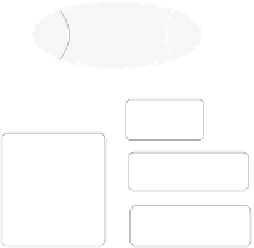Information Technology Reference
In-Depth Information
1
Introduction
Extending visual content with a third dimension, or capturing a dynamic scene in 3D
and generating an optical duplicate of it in real-time, has been a dream over decades.
All components (hardware and software) related to this viewing experience are col-
lectively referred to as three-dimensional television (3DTV). Often presented as the
next evolution of television, this new area of research holds tremendous potential
for many applications in entertainment, telepresence, medicine, visualization and re-
mote manipulation to name just few. From a technological point of view, creating the
illusion of a real environment, is necessary condition over the whole 3DTV chain,
including 3D image acquisition, 3D representation, compression, transmission,
signal processing and interactive rendering. We now have numerous multiscopic
rendering systems with or without glasses. Different technologies support all these
systems; stereoscopy with colorimetric or temporal mixing such as anaglyph [1, 2],
occultation and polarization [3], for example for projections with glasses as in some
movie theaters; autostereoscopy [4, 5] such as parallax barrier and lenticular lens; or
again for 3D advertising billboards, autostereoscopic displays or lenticular printing.
Real
Augmented
reality
Virtual
Still
scene
Photo
Image Synthesis
Photo
Image Synthesis
Computer
Animation
Animated
scene
Video
Control
of depth
distortions ?
Lenticular
printing
Projection or
displaywith
glasses
- anaglyph
-occultation
- polarisation
Fig. 1
From shooting to
rendering process: the dif-
ferent rendering modes and
kinds of scenes (real or vir-
tual, still or animated) to be
shot.
Autostereoscopic
street billboard
Image
Autostereoscopic
display
Video
Stereoscopic
Autostereoscopic
As shown in Figure 1, the different rendering modes and kinds of scenes to be
shot are well-known, but all these systems need content; up to now, there has been no
3D shooting system specifically designed to acquire a qualitative 3D content. Some
works [6, 7, 8, 9] present efficient algorithms for stereoscopic display to obtain a
3D content from a 2D-plus-depth content. Their global and common idea lies in
the slight difference between the right view and the left view. So, they generate














